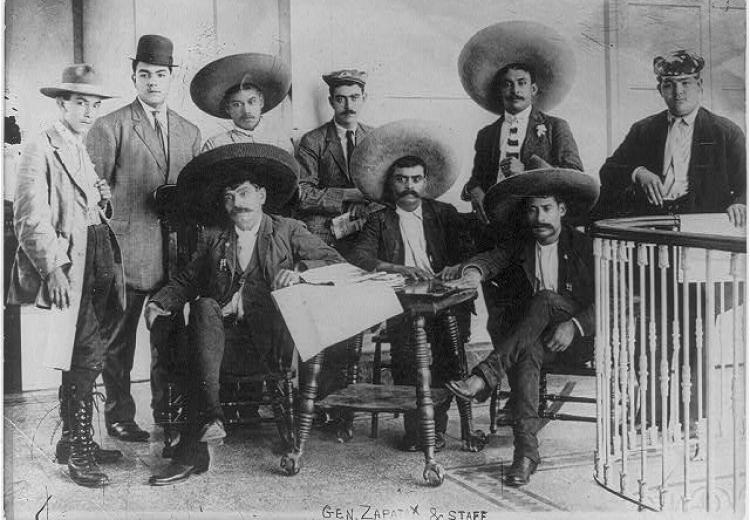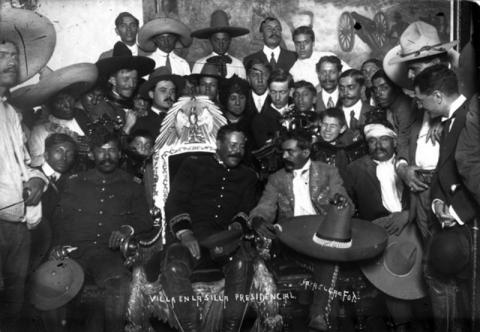The Mexican Revolution

General Emiliano Zapata sits with members of his staff in the Hotel Coliseo, Mexico City. June 24, 1911.
The Mexican Revolution was a complex and violent conflict that profoundly shaped twentieth-century Mexico. This lesson explores the economic, social, and political context for revolution, the reasons different revolutionary leaders gave for revolt, and the Revolution's enduring symbolic power in modern Mexico. Working with primary sources including maps, photographs, and texts, students will develop an understanding of specific historical actors, ideas, and events, as well as the broad contours of the Revolution, enabling them to place it in historical and comparative perspective.
Guiding Questions
What were some of the economic, social, and political factors that led to the Mexican Revolution?
What were the objectives of the principal revolutionary factions?
What have been some of the legacies of the Mexican Revolution?
Learning Objectives
Use primary sources, including maps, texts, and images, to understand and explain the major causes of the Mexican Revolution.
Identify key revolutionary figures and the objectives they sought to achieve.
Trace the Revolution's legacy and evaluate its influence on more recent social movements in Mexico and beyond.
Compare the Mexican Revolution to other revolutionary movements of the 18th-20th centuries.

